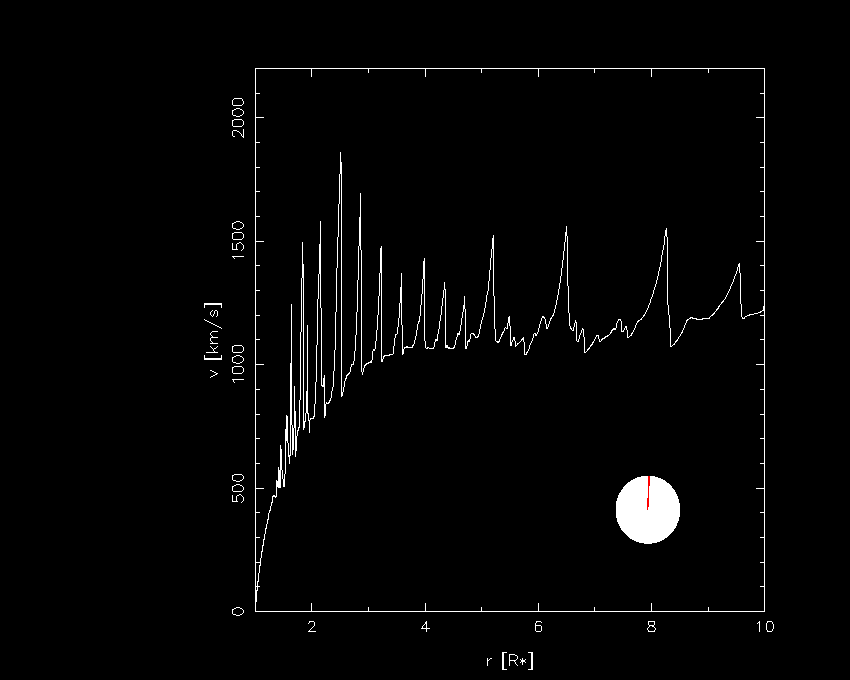
The first part of the movie showed the initial response of the wind to the instability, i.e., a transient
During the full simulation, the wind is perturbed by a weak sound wave from the photosphere, which triggers the instability
At later times now, the wind settles on a limit cyle, and shows a perfectly periodic response to the triggering sound wave
Some 50 overtones of the fundamental perturbation period can be distinguished
The instability has actually two stages: between 5 and 8 stellar radii, formerly stable gas ahead of the shells becomes unstable, too, which leads to a second generation of shocks
This second shock generation merges with the first generation between 8 and 10 stellar radii
This delayed or two stage instability is related to shell (early) versus cloud (late) formation in O star winds
We believe that indeed the collisions of fast clouds with dense gas shells are responsible for the observed X-ray emission from O stars (Feldmeier et al. 1997)